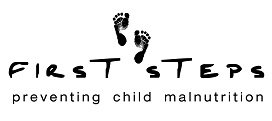MALNUTRITION IN NORTH KOREA
One in five children suffers from malnutrition in North Korea.
The critical period for physical and mental development is from pregnancy to 24 months.
North Korea, with an estimated population of 25 million, has experienced ongoing food shortages since the 1990s. Pregnant women, nursing mothers, and children under five years of age are most vulnerable. They are at risk of becoming malnourished because their diets lack sufficient vitamins, fat, minerals and protein.
Poorly nourished women are likely to be deficient in vitamins and minerals, deliver low-birth-weight babies and be unable to produce nutrient-rich breastmilk. Low birth-weight babies are prone to infection, diarrhea, pneumonia, and chronic malnutrition.
A combination of undernutrition and other factors like poor maternal health, limited access to quality health care, and lack of clean water has caused 80% of malnourished children in North Korea to be stunted. Not only does stunting impact a child’s physical development, it damages their learning capacity and productivity during adulthood. Because stunting develops before a child turns two, the “window of opportunity” to prevent the irreversible consequences of this condition is from pregnancy to 24 months old.
Through both our soymilk and sprinkles programs, First Steps aims to alleviate the continuous cycle of malnutrition in North Korea.
MALNUTRITION FACTORS
ANEMIA
Anemia is a nutritional deficiency largely caused by low iron. Pregnant and nursing women and young children are most susceptible to developing anemia. Common symptoms of this condition include drowsiness, fatigue, and weakness. Without treatment, anemia worsens and can become the underlying cause of chronic ill health and delayed cognitive development.
WASTING
Wasting (low weight-for-age) is often caused by an immediate problem like illness (i.e. diarrhea). It can also result from limited access to food due to seasonal shortages, sudden catastrophes or adverse weather events. If the body is not getting the minerals and nutrients it needs to function, it begins breaking down fat and muscle and ‘wastes’ away.
STUNTING
Stunting (low height-for-age) is a form of chronic malnutrition. It is caused by a combination of nutrition insecurity with other factors like limited access to quality health-care, poor maternal health and lack of clean water. If children are not reached before 24 months, the effects of stunting, like faltering growth and cognitive impairments, are irreversible.
RICKETS
Breast-fed children whose mothers are not receiving enough Vitamin D, calcium or phosphorous, are at a high risk of developing rickets. When a child has rickets, their bones don’t receive the minerals needed to form hard outer shells. Instead, they become tender and the muscles weaken, leading to fractures and deformities like bowed legs.
DIARRHEA
Diarrhea is both a cause and an effect of malnutrition. Diarrheic episodes cause the body to lose fluids and nutrients. A lot of diarrhea in a short amount of time causes dehydration, which can be deadly. Malnutrition leads to diarrhea by damaging the lining of the intestines and/or weakening the immune system.







